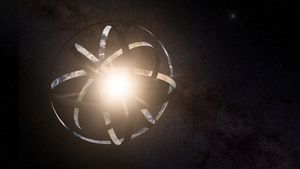JAKARTA - The James Webb Space Telescope belonging to the United States Aeronautics and Space Agency (NASA) identifies carbon dioxide originating from the salted ocean under Jupiter's lunar ice sheet, Europa.
Although scientists already know Europa has a sea of water beneath the ice sheet, it is not yet known whether the water has the right content to support life.
According to Geronimo Villanueva from NASA's Goddard Space Flight Center, understanding the chemical compounds in the Europa ocean will determine whether the oceans are life-friendly.
Meanwhile, Samantha Trumbo of Cornell University at Ithaca said that carbon discovery is important to observe because carbon is an important element in biological knowledge.
So far, NASA's Webb has just found the location with the most abundant carbon dioxide. This location is called Tara Remi. At that location, the ice surface has been destroyed and the possible exchange of material between oceans and ice has occurred.
From this discovery, scientists suspect that carbon comes from the interior of the ocean. With this discovery, they also increasingly want to explore Europa.
"We may be able to learn some basic things about ocean composition even before we drill through ice to get a complete picture," Villanueva said in an official NASA release.
NASA plans to launch a Europa Clipper spacecraft to further investigate Europa's condition. The launch is planned for October 2024.
اقرأ أيضا:
The English, Chinese, Japanese, Arabic, and French versions are automatically generated by the AI. So there may still be inaccuracies in translating, please always see Indonesian as our main language. (system supported by DigitalSiber.id)
















